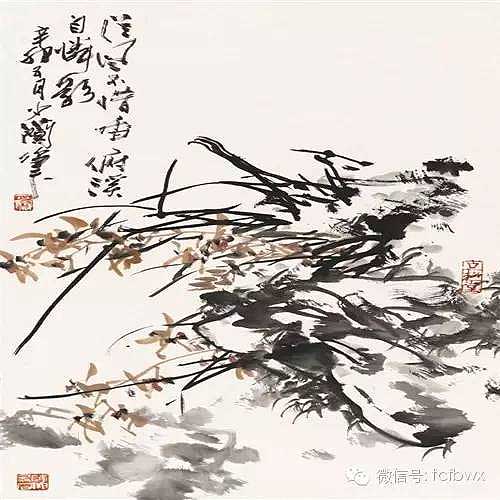|
E China museum celebrates a modern Chinese art master
( chinadaily.com.cn )
Updated: 2015-12-29
|
|||||||||
The old town of Liuhe in the city of Taicang, Jiangsu province saw the opening of the Xing Shaolan Art Museum, on Dec 19, with more than 140 paintings and calligraphy works on show at the 980-square-meter venue, where a plaque over the front door showing the calligraphy of Feng Yuan, a former curator of National Art Museum of China.
The two-storey courtyard building has black roof tiles and white walls, comprising an elegant exterior. Inside the walls, black bamboos, Lodgepole pine and rockery embellish the atriums and the riverside backyard.
The inner spaces are lit up by the works of Xing Shaolan, ranging from flower and bird paintings, nature scenes to calligraphy. Xing, as a painter, is not interested in re-creating subjects to their original forms. His creations are driven by metaphysics, which is a distinction of literati paintings.
 |
|
Art enthusiasts ingest paintings by Xing Shaolan at the Xing Shaolan Art Museum, which opened?in Taicang, Jiangsu province, on Dec 19.[Photo from Taicang Daily] |
Born in Shandong province and brought up in Taicang, Xing studied under Zhu Qizhan (1892-1996) in the 1950s then learned landscape painting from Song Wenzhi (1919-1999) later. The two masters of Chinese ink painting reinvigorated the Loudong School, growing up in the turbulent times of modern China.
As a student of the two masters, Xing has developed his own style. His paintings are done with flowy, unrestrained figures. The best examples of this expression technique could be the paintings of pine trees and orchids, many of which are on show at the museum.
 |
|
A Chinese ink painting of orchids by Xing Shaolan. [Photo from Taicang Daily] |
One outstanding piece, at the center of the 2nd-floor exhibition hall is "Picture of An International Port of Trade", which depicts the bustling Liujiagang (port) in Taicang in the Ming Dynasty (1368-1644), done especially for the museum opening. It shows ancient streets, businessmen, sedan chairs, pack animals and ships which bring alive this juncture of the Yangtze River and the Pacific Ocean.
Xing expresses the marine culture of the period, which peaked at the time of the Chinese mariner Zheng He's ocean voyages.?He spent a long time studying historical records and drew five works with the same theme over the past 30 years.
 |
|
Xing Shaolan stands in front of his work that depicts the bustling Liujiagang (port) in Ming Dynasty (1368-1644) Taicang. [Photo from Taicang Daily] |
The site also contains porcelain works, including a plum vase, square vase, and pot and plate all made by Xing Shaolan at Jingdezhen, the capital of porcelain, in Jiangxi province. The patterns go from orchids, to crabs, to plum flowers and gourds, to landscapes and people. A few strokes on the porcelain surface show Xing's painting skills in an effortless way.
Taicang is located in the wealthy and culture-rich Yangtze River Delta and has produced many talented artists. The Loudong School was started back in the early Qing Dynasty (1644-1911) by three local painters – Wang Shimin, Wang Yuanqi, and Wang Jian -- along with Wang Hui from the nearby city of Changshou. That School dominated painting in China up to modern times. It, in turn, had inherited the theory of Dong Qichang, who focused on individualism and carried on the proud Chinese painting legacy of the Song and Yuan dynasties (960-1279, 1271-1368).
Edited by Roger Bradshaw
Related stories:

